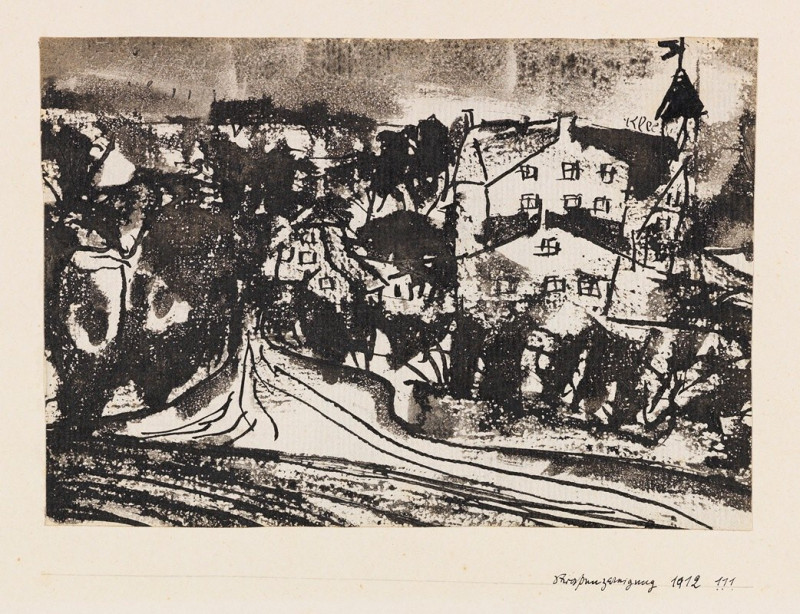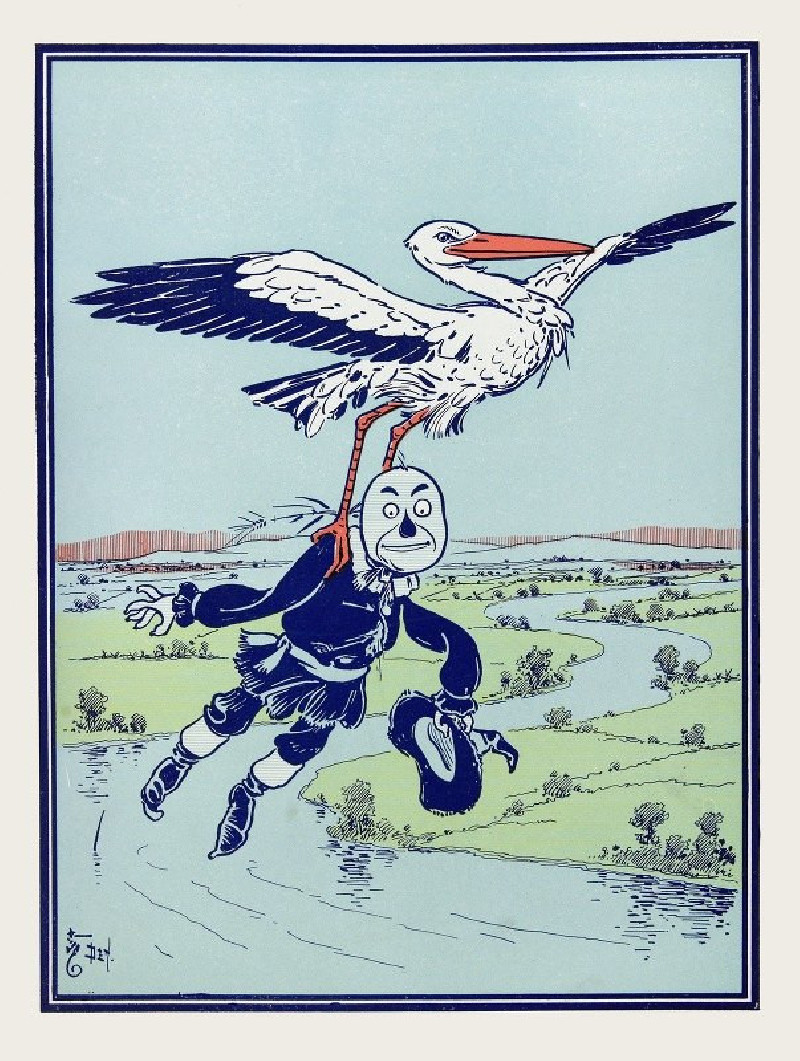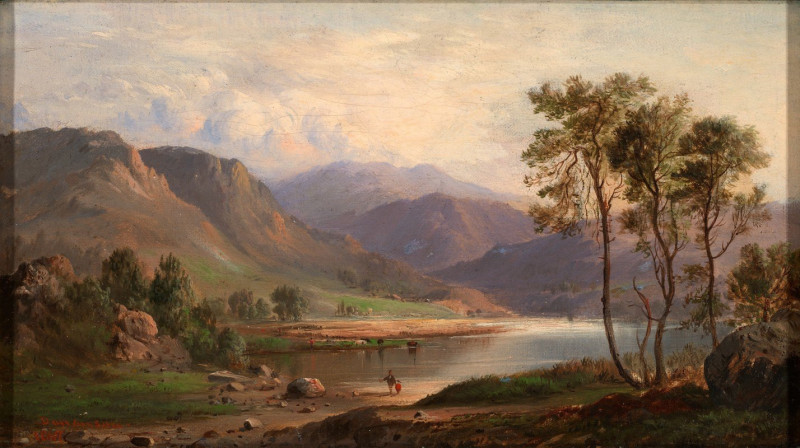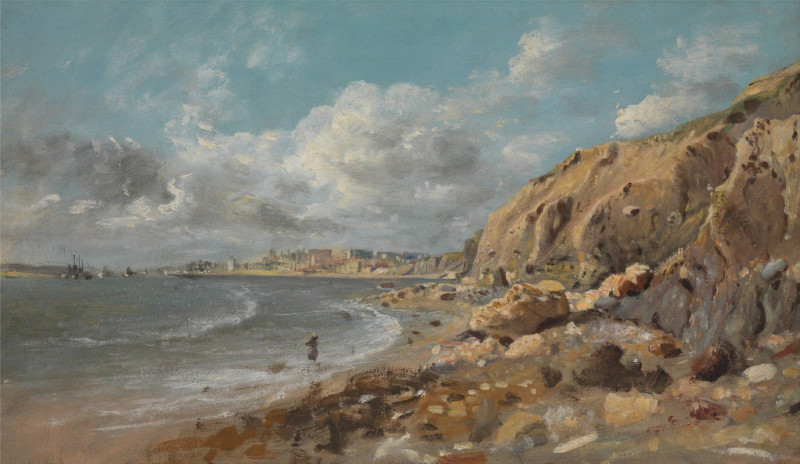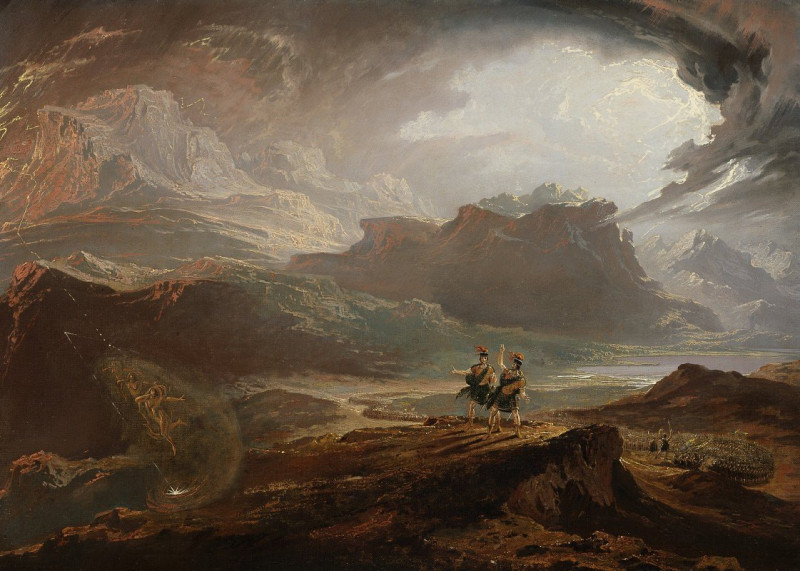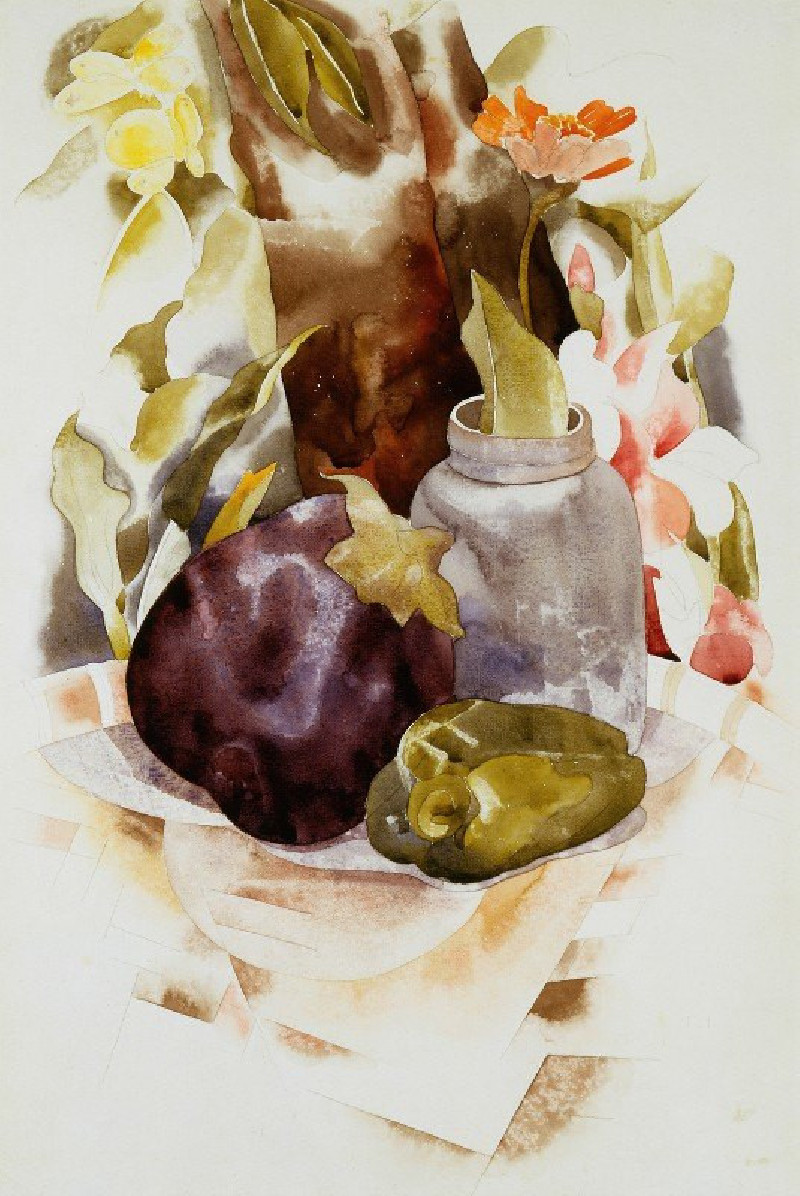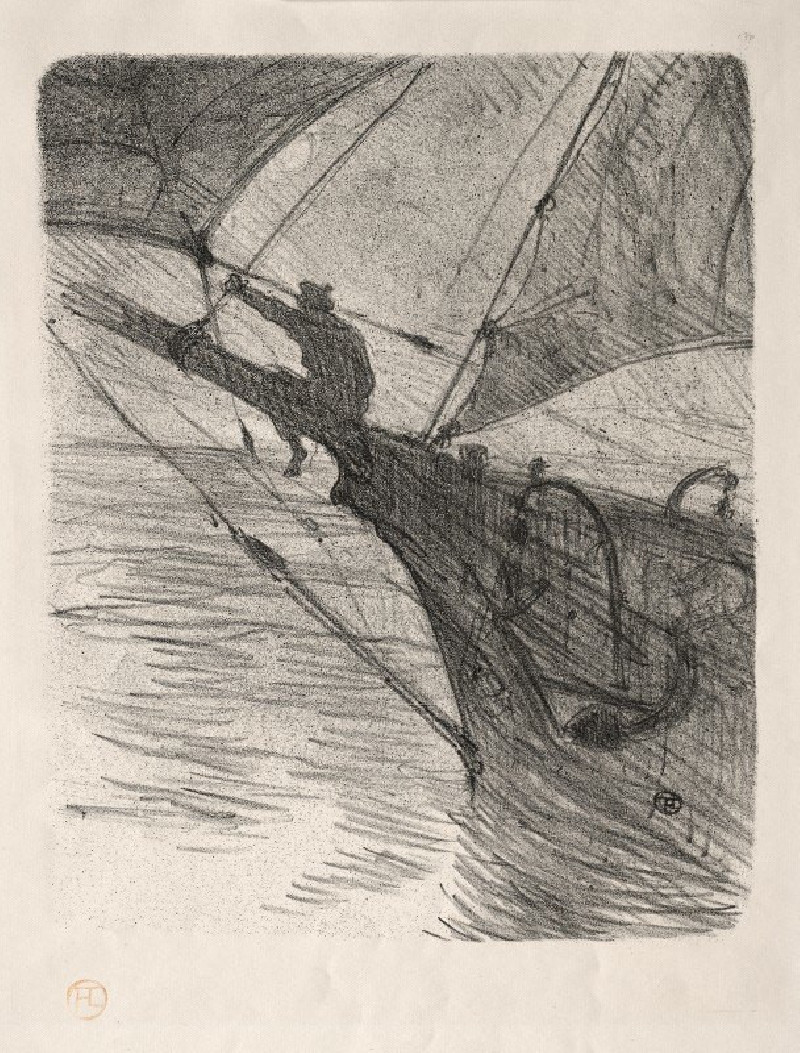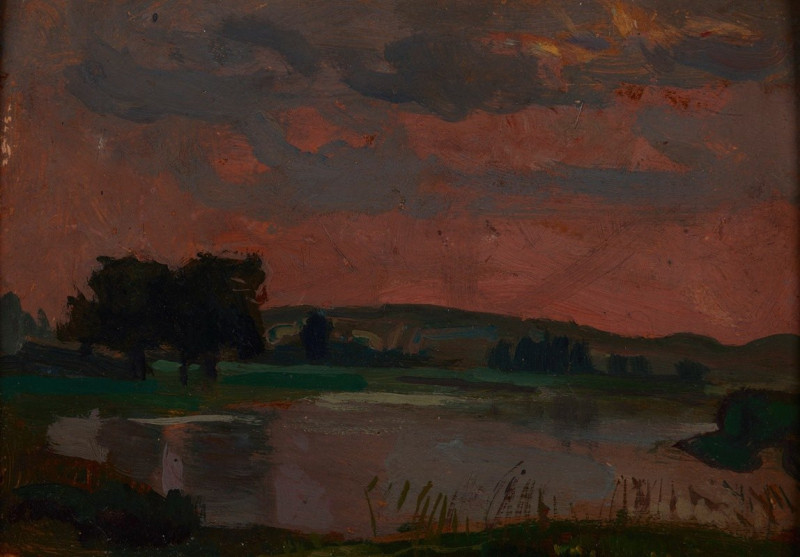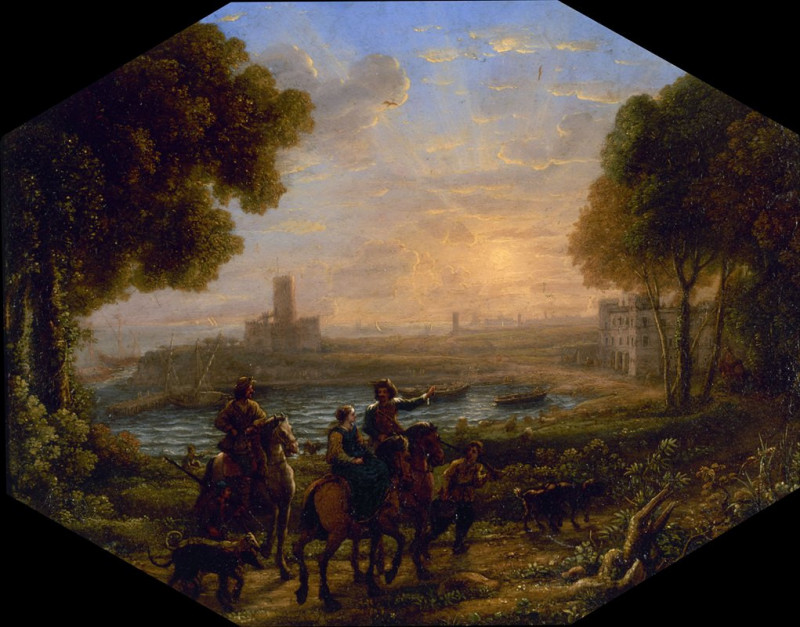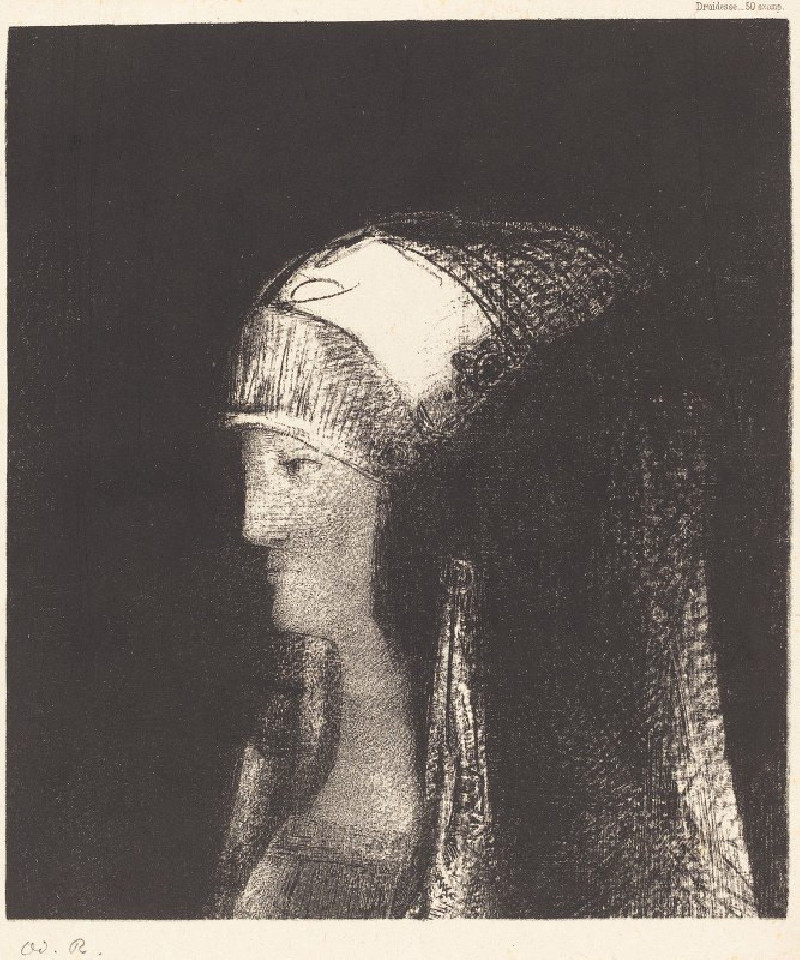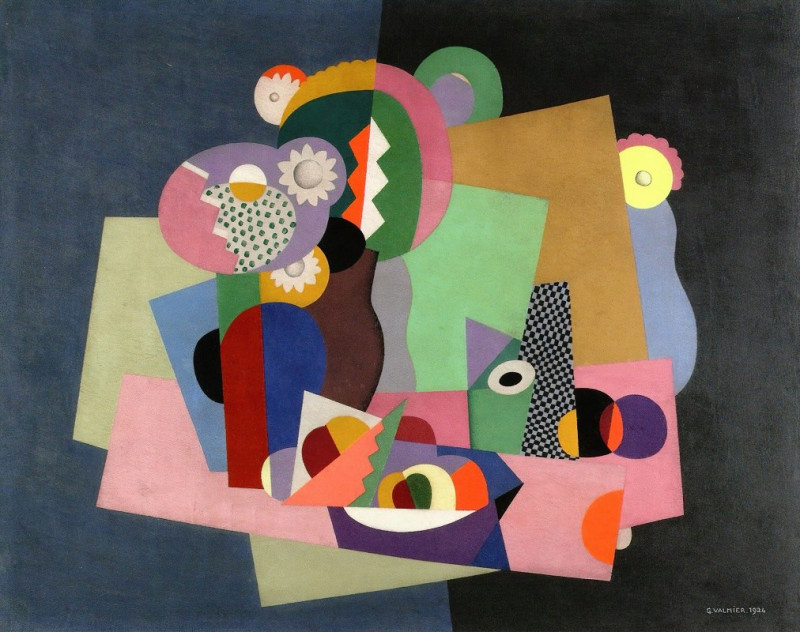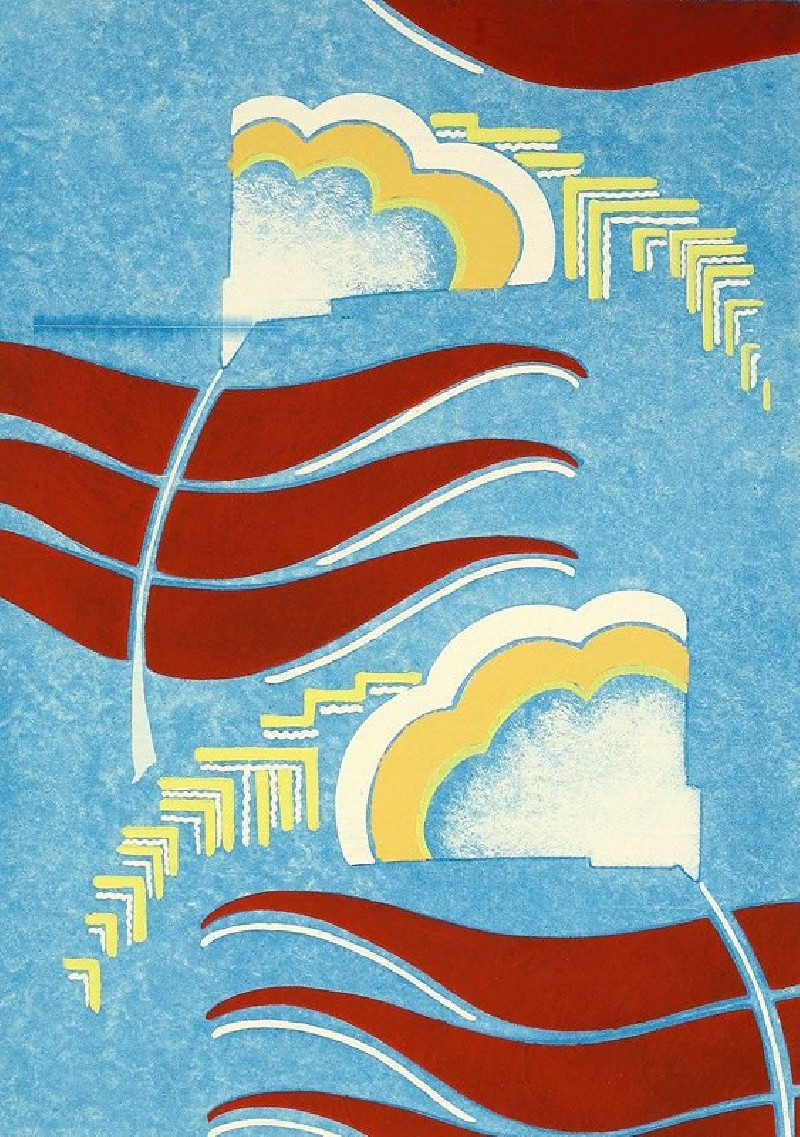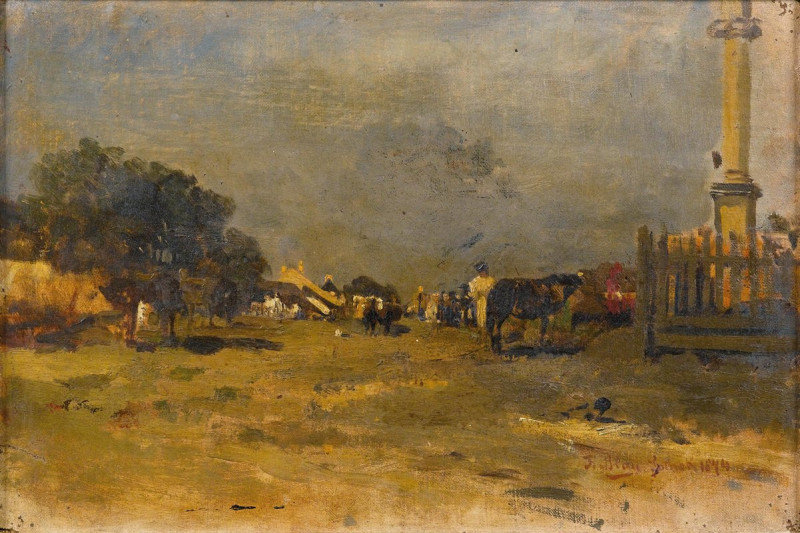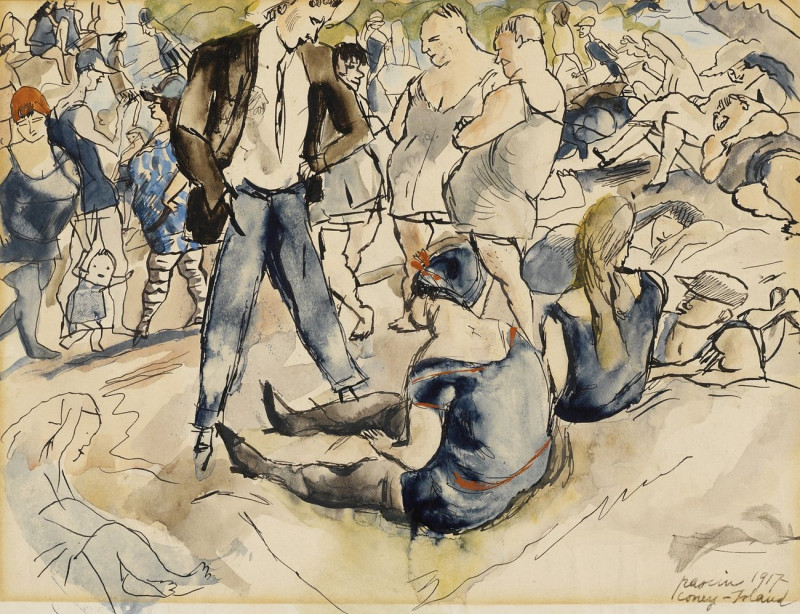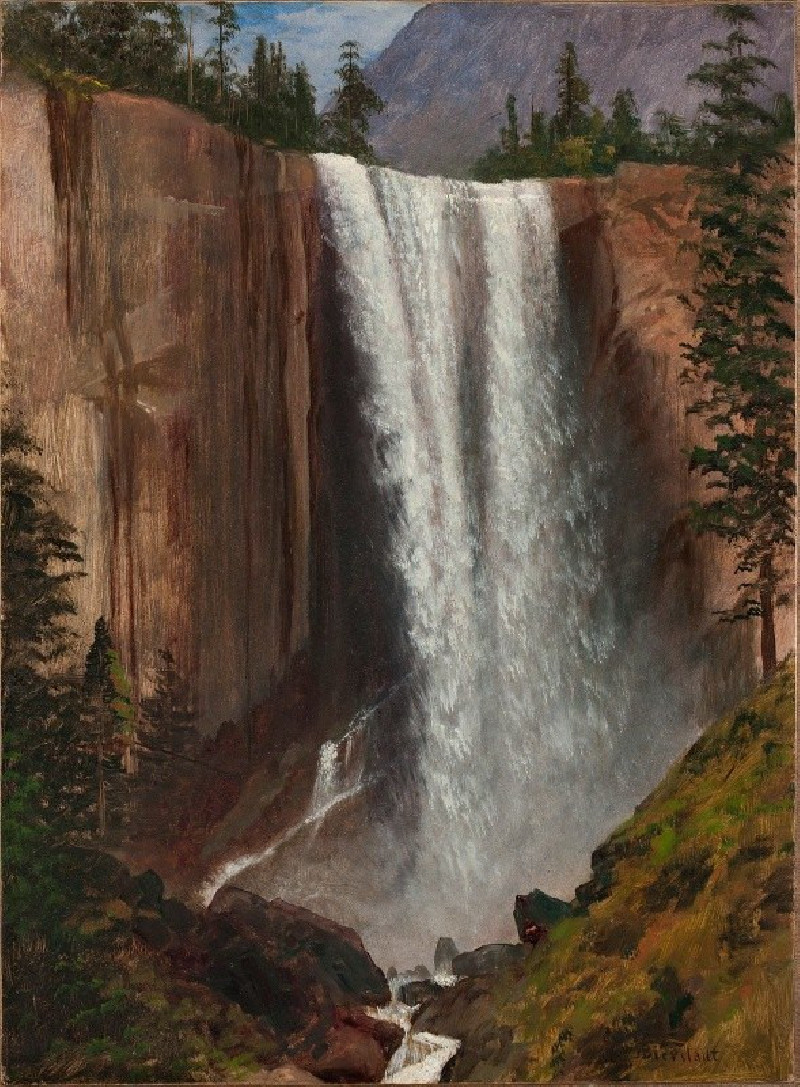Straßenverzweigung (bei aufgeweichtem Boden) (1912)
Technique: Giclée quality print
Recommended by our customers
More about this artwork
Explore the enchanting creativity of Paul Klee through his intriguing work "Straßenverzweigung (bei aufgeweichtem Boden)" or "Road Fork (with Softened Ground)" crafted in 1912. In this evocative composition, Klee masterfully uses a monochrome palette to sketch the dynamic interplay of light and shadow, giving birth to a picturesque village scene enveloped by the ambiguity and texture of the softened terrain.At first glance, the viewer is drawn into a latticework of paths that diverge and merge, lined by the skeletal forms of trees which suggest a chilly, perhaps early spring day. These paths guide your gaze through the clustered, somewhat mystical arrangement of buildings at the heart of the piece. These structures, marked with window-like details and nestled against what could be a hillside, convey a quaint, almost dreamlike vision of village life.Klee's famed delicate and poetic touch is apparent in how he balances the real and the abstract. The composition’s upper part, smeared in a haze of darker tones, possibly suggests a sky heavy with clouds or the overhanging canopy of tree branches, while the lower expanse draws you into the meandering routes that invite one to imagine wandering through this ethereal landscape."Straßenverzweigung (bei aufgeweichtem Boden)" is not just a visual journey but also an invitation to reflect on the paths and choices laid before us, echoing Klee's ability to transcend the tangible world into one rich with metaphor and emotion. This piece is a beautiful testament to Klee's unique vision and his perpetual quest to capture the profound simplicity hidden within the complex patterns of life.
Delivery
Returns
Paul Klee was a Swiss-born German artist. His highly individual style was influenced by movements in art that included expressionism, cubism, and surrealism. Klee was a natural draftsman who experimented with and eventually deeply explored color theory, writing about it extensively; his lectures Writings on Form and Design Theory (Schriften zur Form und Gestaltungslehre), published in English as the Paul Klee Notebooks, are held to be as important for modern art as Leonardo da Vinci's A Treatise on Painting for the Renaissance.

